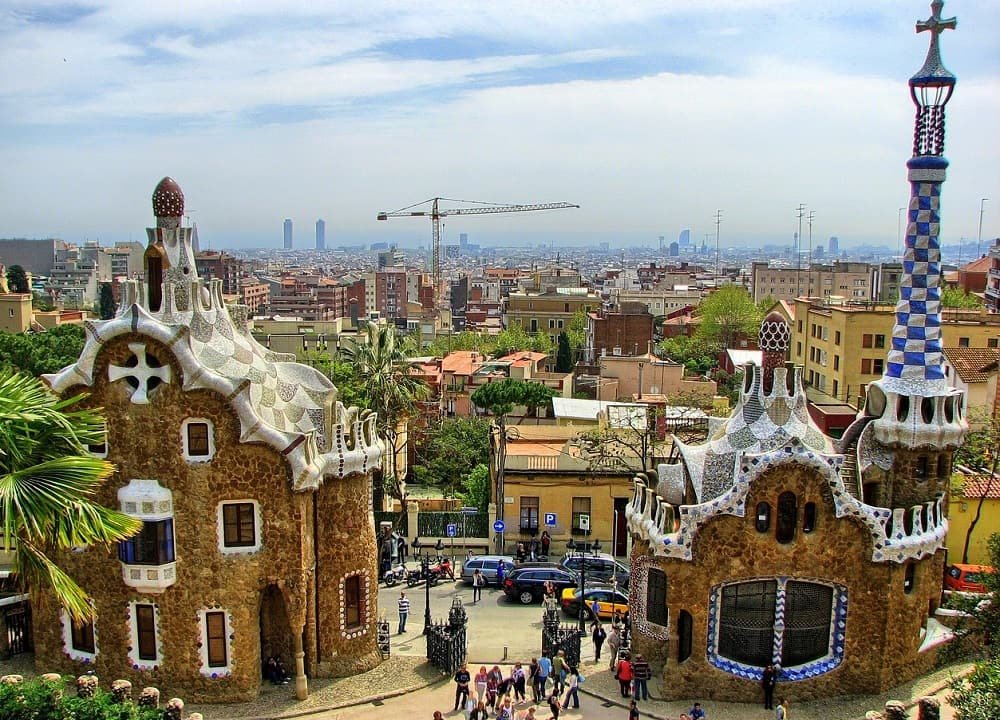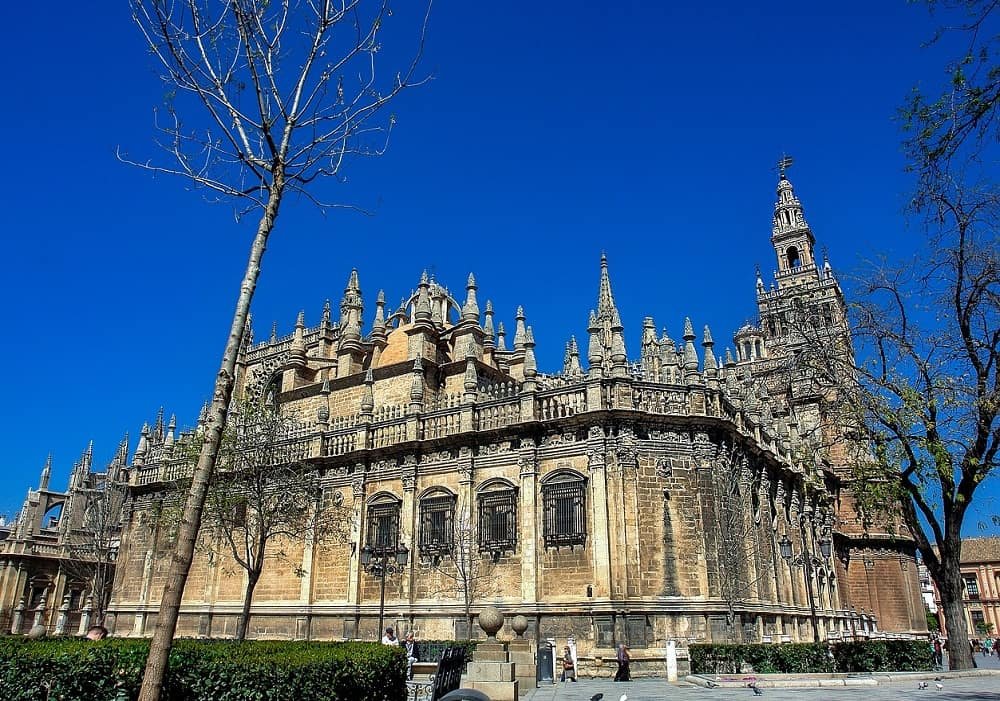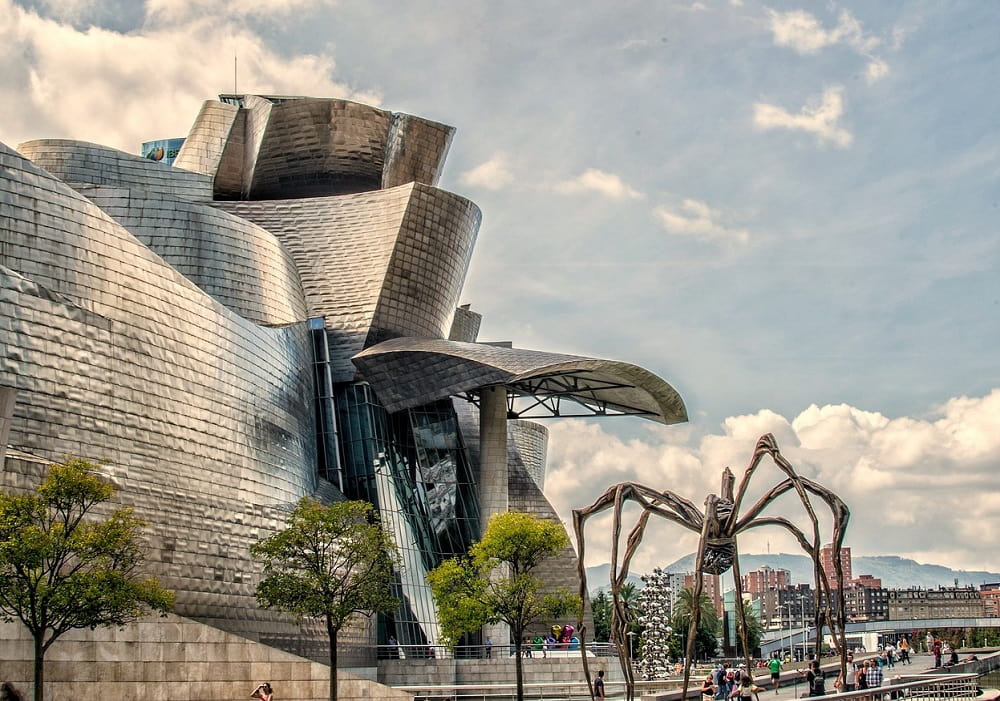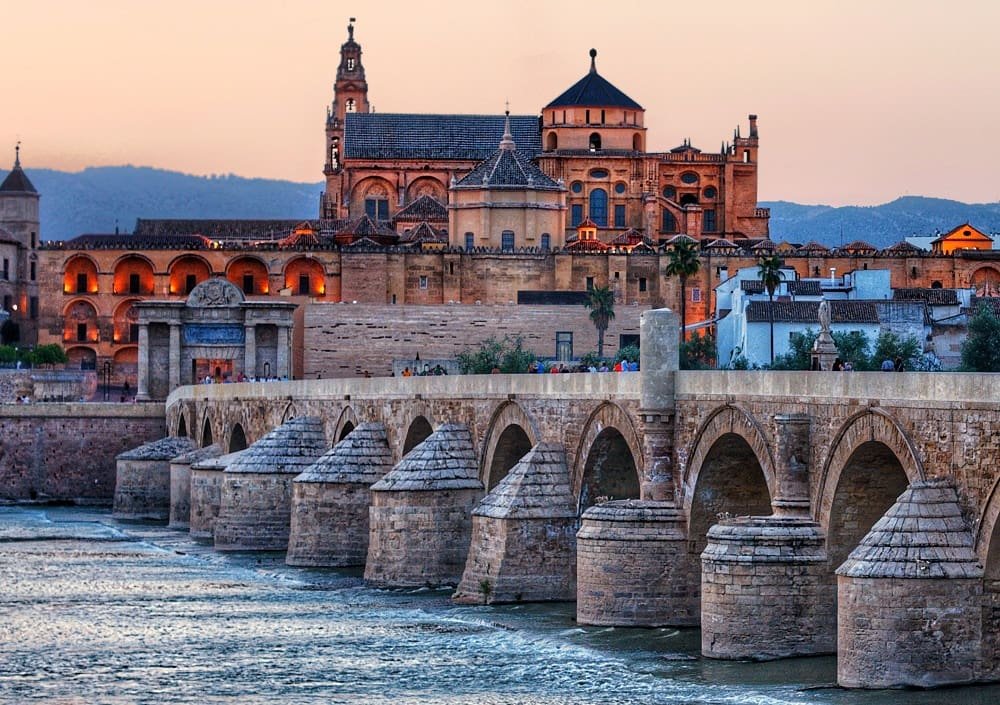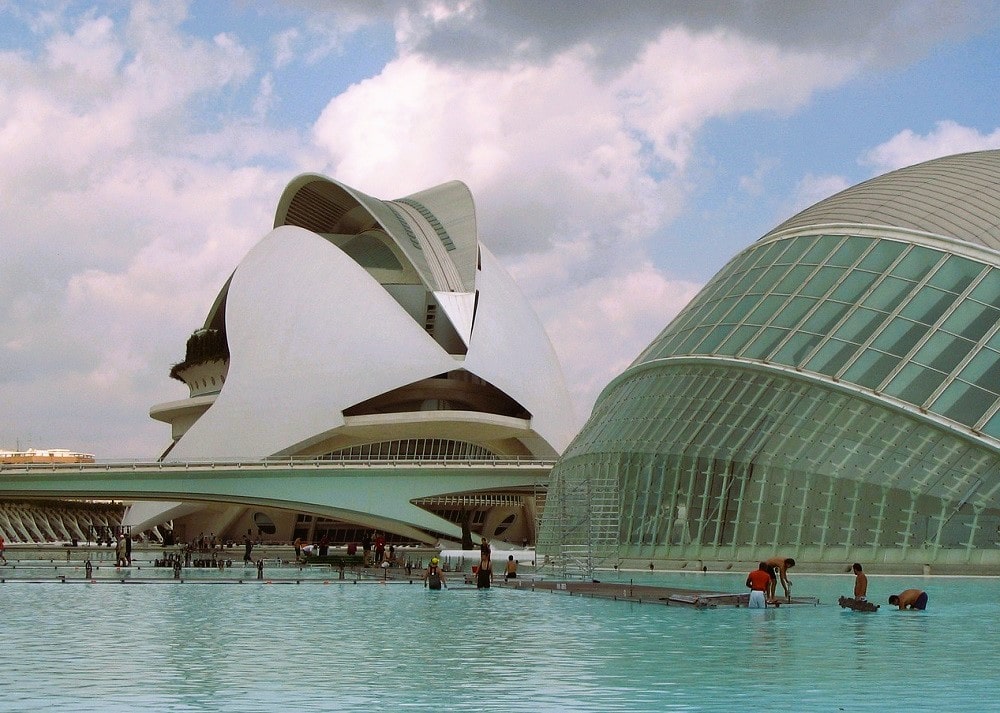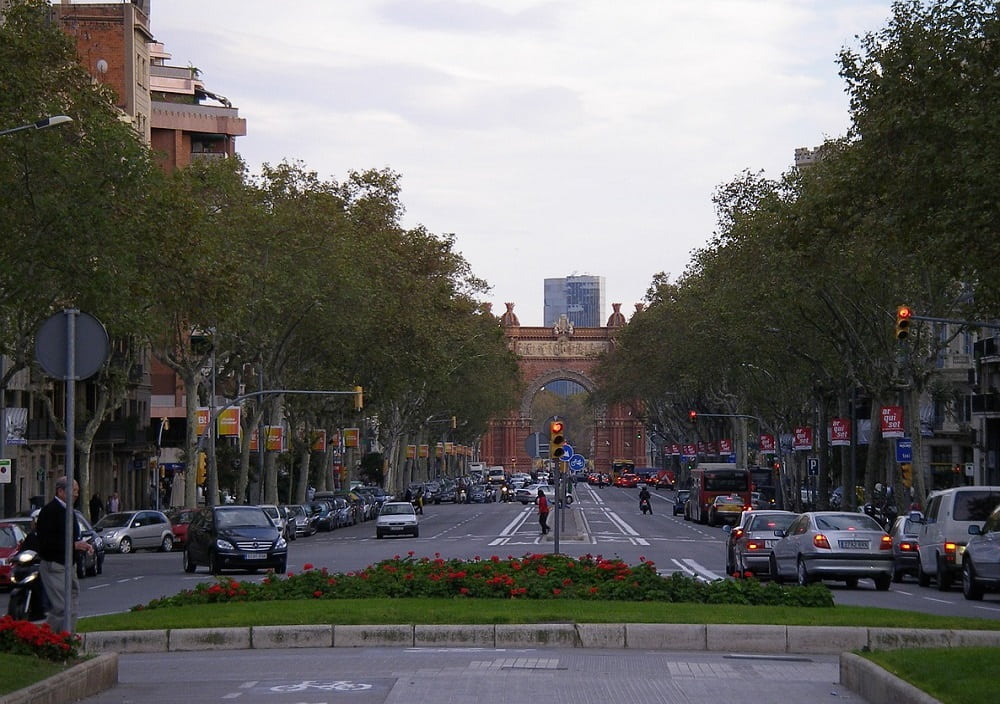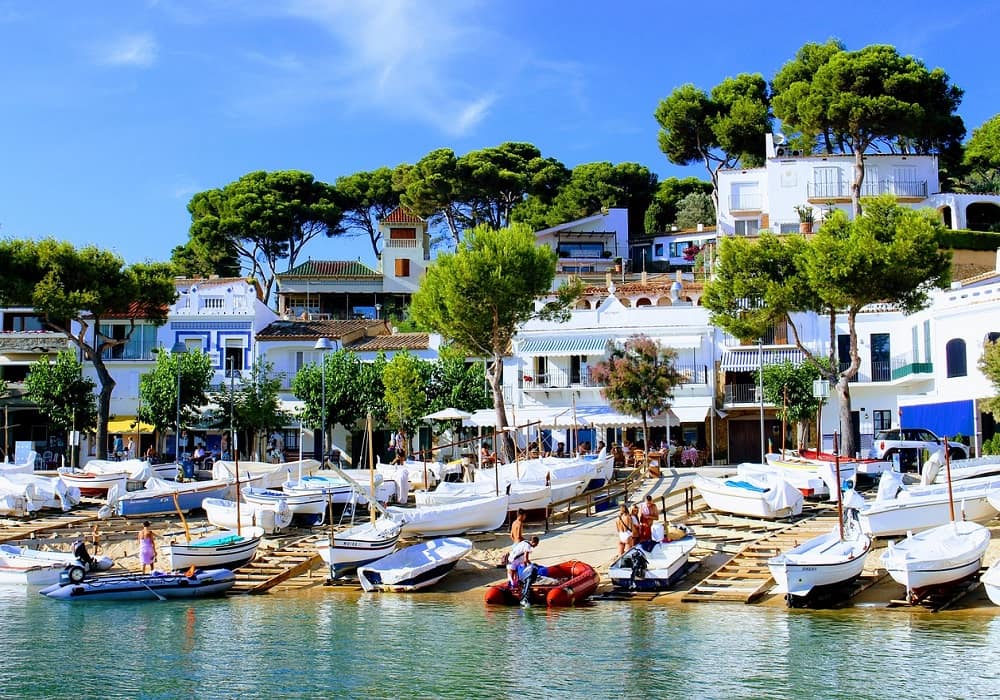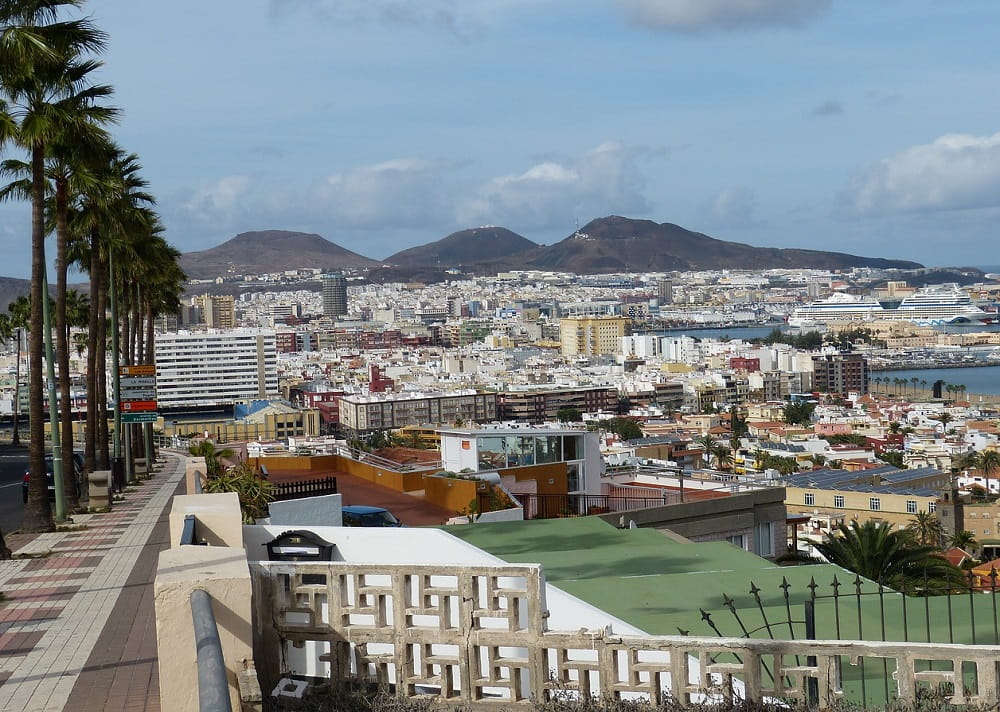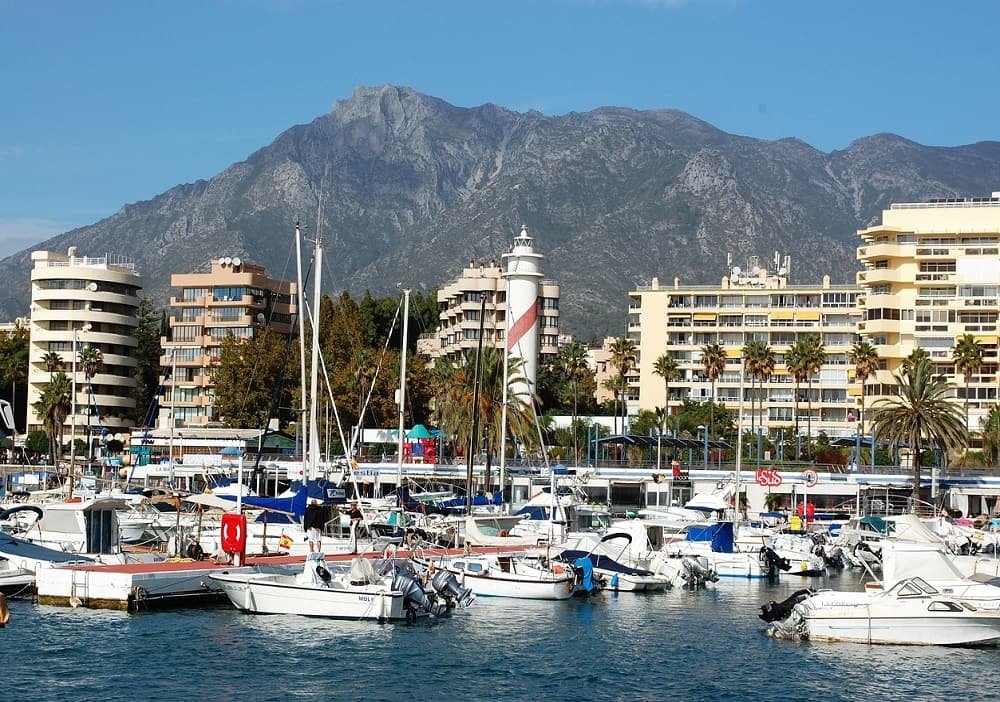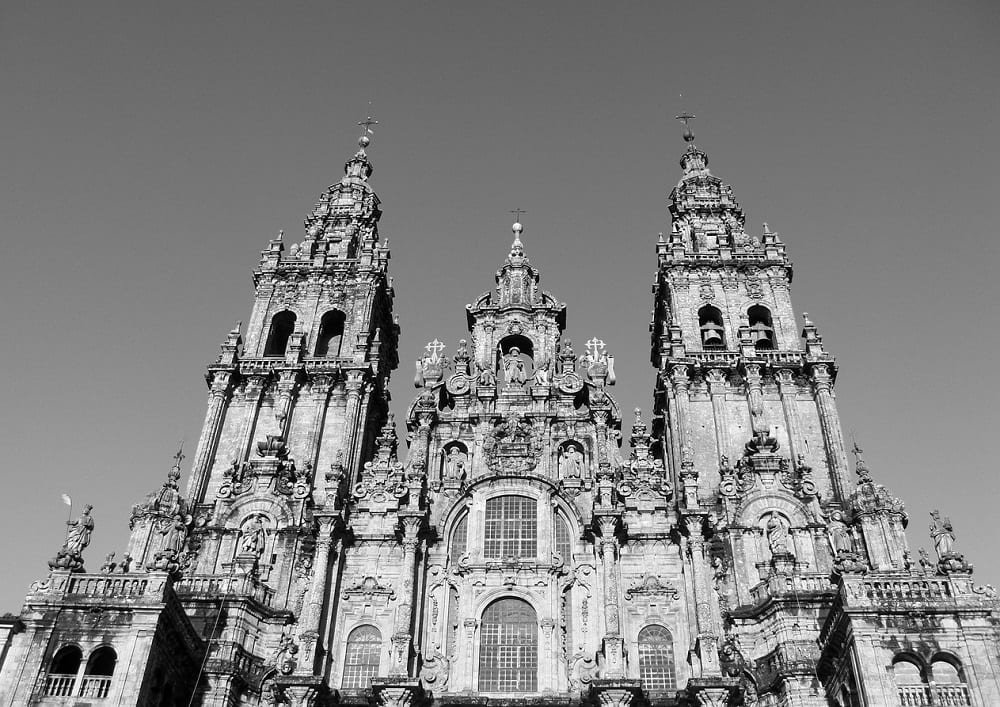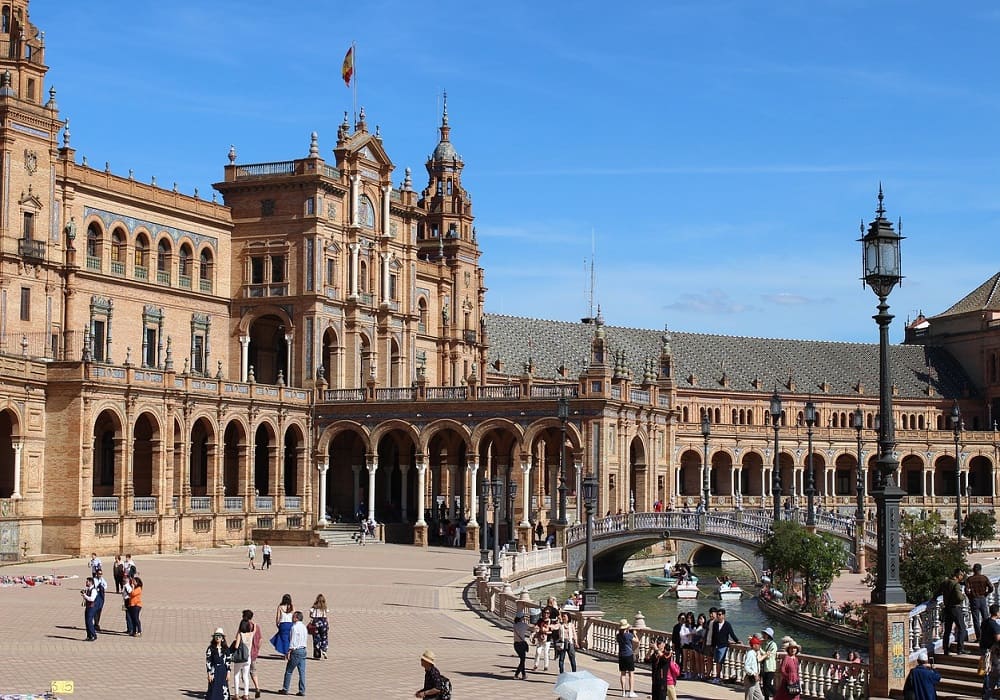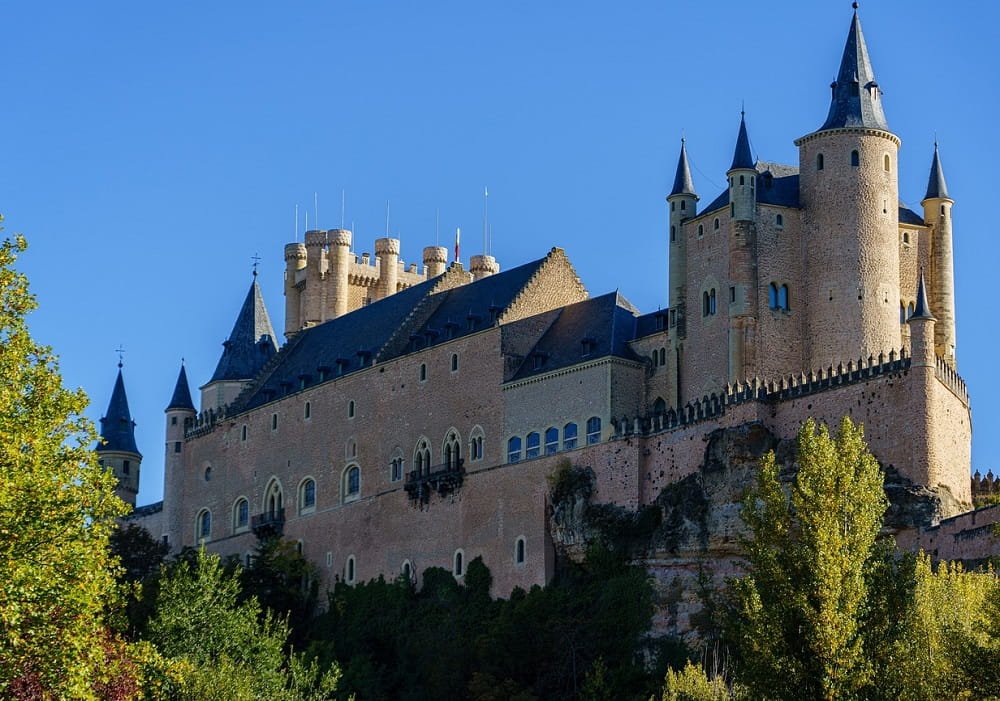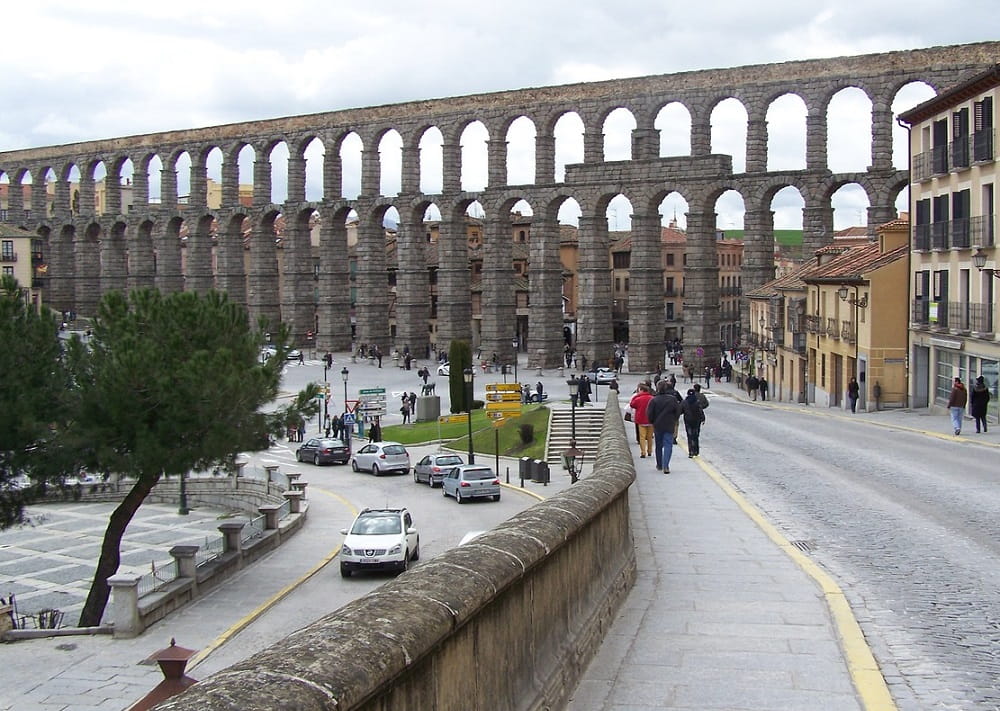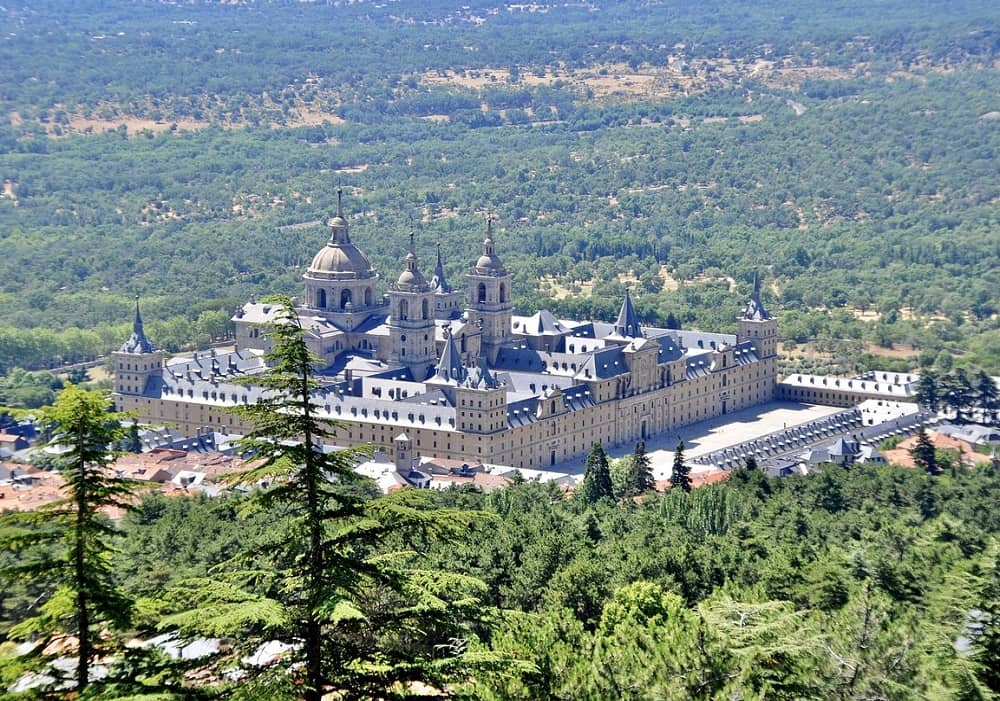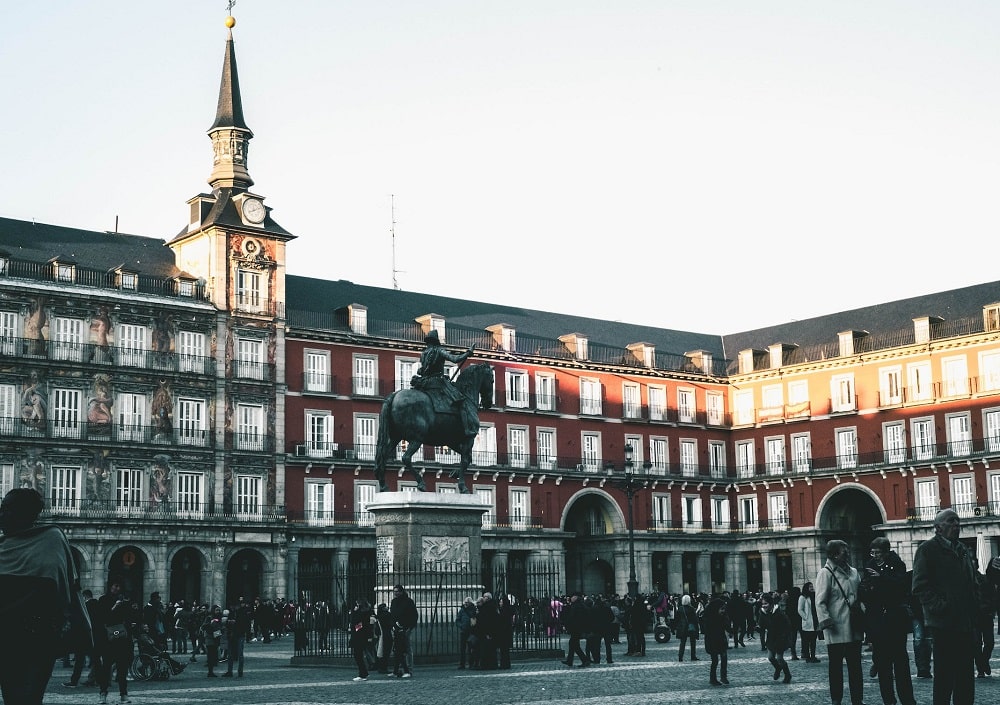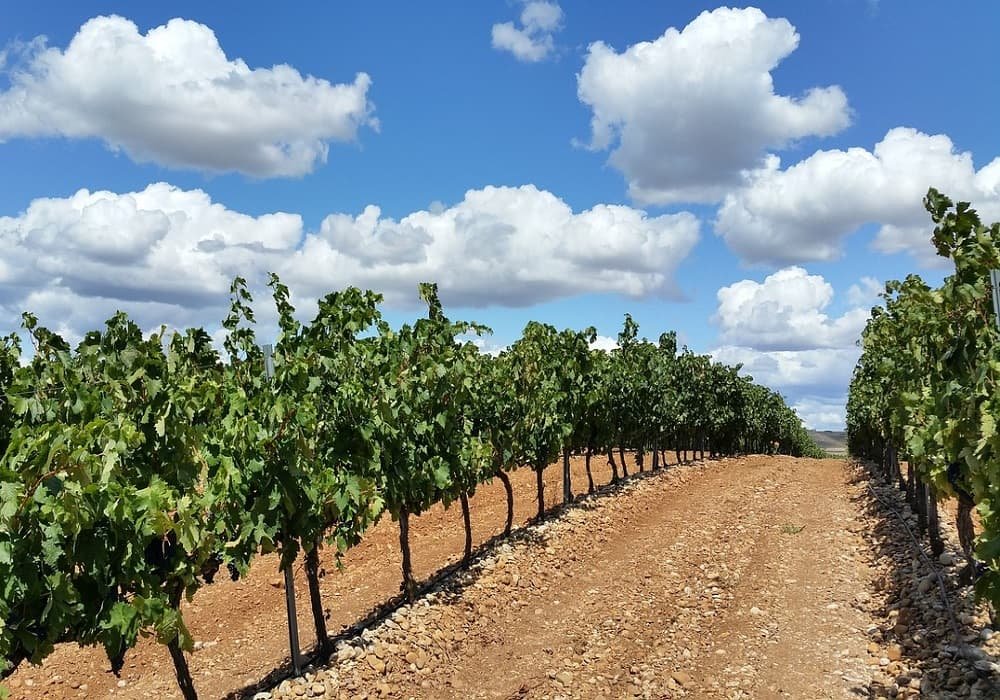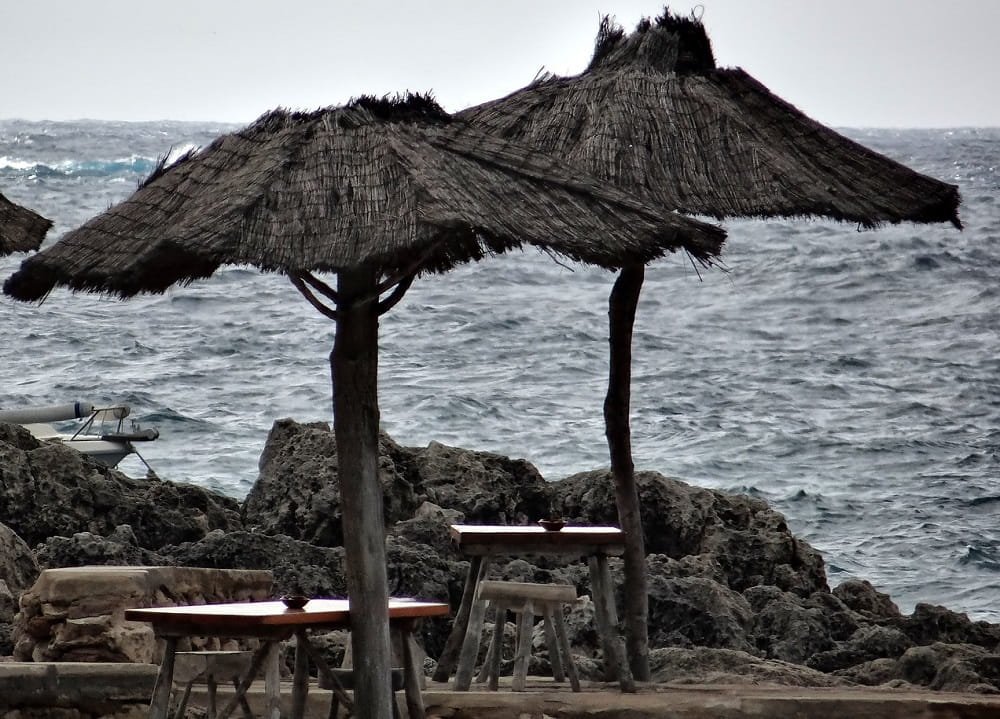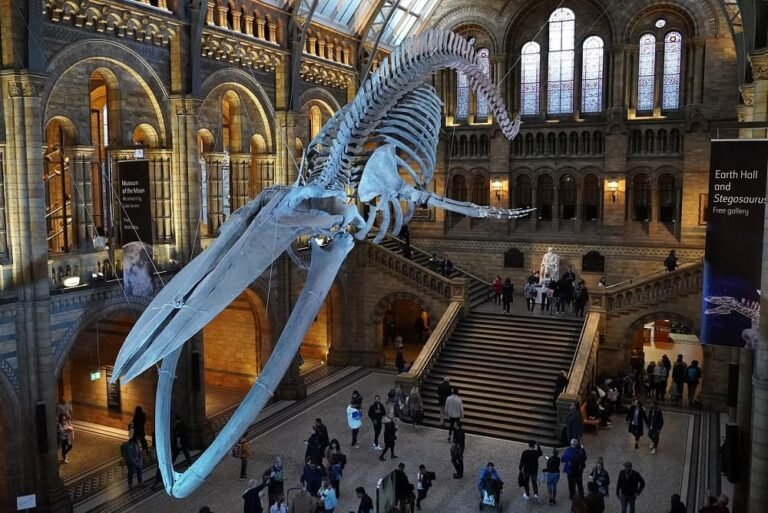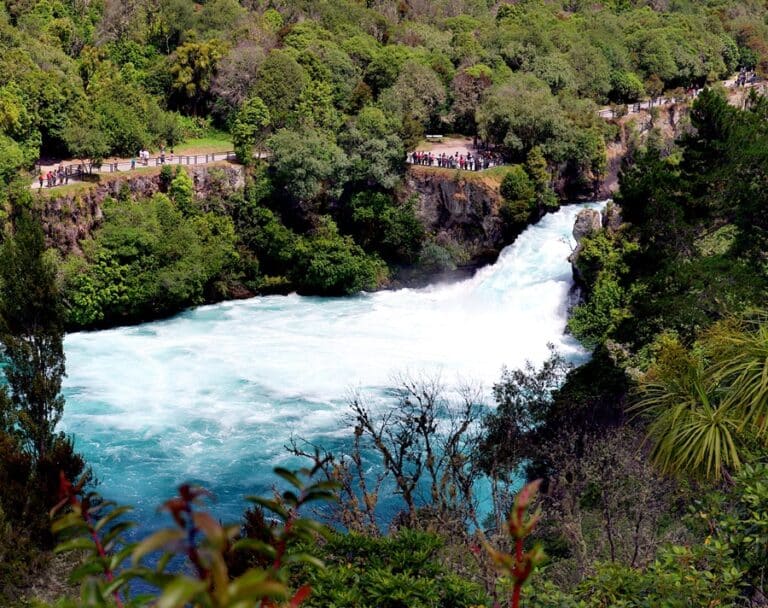Top 22 Tourist Attractions in Spain That Will Amaze You
Last Updated on 16th April 2023 by admin
Spain is one of the most visited countries in Europe and the world, attracting millions of tourists every year with its diverse and appealing attractions. Spain offers a variety of destinations, from sunny beaches and beautiful islands to historic cities and monuments, from vibrant festivals and nightlife to cultural and natural heritage.
Spain is a country rich in culture, history, nature and art. It offers a variety of attractions for travelers of all tastes and interests. Whether you are looking for stunning architecture, beautiful beaches, vibrant cities or scenic landscapes, Spain has something for you. Here are 22 of the most famous tourist attractions in Spain that you cannot miss.
1) La Sagrada Familia
La Sagrada Familia is the masterpiece of Antoni Gaudí, the most famous architect of Barcelona and one of the pioneers of modernism. This basilica, which has been under construction since 1882 and is expected to be completed by 2026, is a stunning example of Gaudí’s unique style, which combines Gothic, Art Nouveau and organic elements.
The basilica features intricate facades, soaring towers, colorful stained-glass windows and a spectacular interior with geometric shapes and natural motifs. It is the largest Catholic church in the world and a UNESCO World Heritage Site
Famous For:
- It is most famous as an unfinished church in Barcelona, designed by Antoni Gaudí, one of the most renowned architects of modernism.
- The church famous for having a unique and expressive architectural style that combines Gothic, Art Nouveau, and organic forms.
- La Sagrada Familia has 18 spires that represent Jesus, Mary, the 12 apostles, and the 4 evangelists, making it one of the famous tourist attractions in Spain.
- Also famous for having three elaborate facades that depict the Nativity, the Passion, and the Glory of Christ
- The church is a rich iconography that reflects Gaudí’s devout Catholic faith and his Catalan identity, and one of the famous tourist attractions in the world.
2) The Alhambra
The Alhambra is a magnificent Moorish palace and fortress complex that sits on a hill overlooking Granada. It was built by the Nasrid dynasty between the 13th and 15th centuries and was the last stronghold of Muslim Spain before it fell to the Catholic monarchs in 1492.
The Alhambra is a marvel of Islamic architecture, featuring elegant courtyards, fountains, gardens, arches, domes and mosaics, and one of the most popular tourist attractions in Spain.
Famous For:
- It is most famous for a palace and fortress complex of the Moorish monarchs of Granada, Spain.
- It is also one of the most famous monuments of Islamic architecture and a UNESCO World Heritage Site.
- It is famous for having a distinctive red colour of its outer walls, which gave it its name (Alhambra means “the red” in Arabic).
- The palace having a rich and intricate decoration of geometric patterns, calligraphy, and arabesques.
- Having various palaces, courtyards, gardens, and towers that reflect the artistic and cultural achievements of the Nasrid dynasty.
- Famous for its history that spans from the 13th to the 15th century, until the Christian Reconquista ended the Muslim rule in Spain.
3) Park Güell
Park Güell is another creation of Antoni Gaudí in Barcelona, which was originally conceived as a residential garden city but was later turned into a public park. The park is a whimsical wonderland of colorful mosaics, sculptures, buildings and terraces that reflect Gaudí’s imagination and love for nature.
The park offers panoramic views of Barcelona and features some iconic landmarks such as the dragon fountain, the serpentine bench and the Hall of Columns. Park Güell is one of the most visited parks in Spain.
Famous For:
- Park Güell is famous for being a public park system composed of gardens and architectural elements designed by the renowned Catalan architect Antoni Gaudí.
- It is one of the UNESCO World Heritage Sites under “Works of Antoni Gaudí”.
- It is also famous for reflecting Gaudí’s artistic plenitude and his inspiration from organic shapes.
- The park has many iconic features, such as the two fairytale-like houses at the entrance, the salamander fountain, the mosaic-covered terrace, and the Gaudí House Museum.
- Today, Park Güell is one of Barcelona’s top tourist attractions, visited by millions of people every year who come to marvel at its unique architecture and stunning views.
4) Ibiza
Ibiza is an island in the Mediterranean Sea that belongs to the Balearic Islands archipelago. Ibiza has something for everyone: from trendy clubs and bars to tranquil coves and villages; from hip hop and techno to flamenco and jazz; from luxury resorts and spas to rustic farmhouses and campsites. Ibiza is also known for its natural beauty and cultural heritage, such as the old town of Ibiza (Dalt Vila) and it is also one of the famous tourist destinations in Spain.
Famous For:
- It is famous for its nightlife, beaches and music festivals that attract millions of tourists every year.
- It is the third largest of the Balearic Islands and part of the Pityusic Islands.
- Having a UNESCO World Heritage Site in its Old Town (Dalt Vila), which is an ancient sandstone fortress.
- There are more than 100 miles of coastline with some 50 beaches, plus plenty of restaurants, bars, and water sports.
- Having a hippy culture and markets, such as Punta Arabi Hippy Market and Las Dalias Hippy Market.
5) Seville Cathedral
Seville Cathedral is the largest Gothic cathedral in the world and one of the most impressive monuments in Spain. It was built on the site of a former mosque, which was demolished after the Christian reconquest of Seville in 1248. The cathedral features a stunning Gothic nave, a Renaissance dome, a Baroque altarpiece and a Moorish minaret, which was converted into a bell tower known as the Giralda. The cathedral also houses the tomb of Christopher Columbus and the relics of several saints.
Famous For:
- It is most famous for one of the Roman Catholic cathedrals in Seville, Spain
- It is also famous for a largest Gothic cathedral in the world and the third Christian temple after St. Peter’s in Rome and St. Paul’s in London.
- Being a UNESCO World Heritage Site under “Cathedral, Alcázar and Archivo de Indias in Seville”.
- Seville Cathedral is a mixture of architectural styles, such as Gothic, Moorish, Renaissance, Baroque, and Neoclassica.
- Having a rich artistic heritage, with altarpieces, paintings, sculptures, stained glass windows, and relics.
- Having the Giralda, a former minaret that was converted into a bell tower and became a symbol of Seville.
6) The Guggenheim Museum Bilbao
The Guggenheim Museum Bilbao is a modern art museum that opened in 1997 and became an instant icon of contemporary architecture. The museum was designed by Frank Gehry, who created a futuristic structure of curved titanium and glass that resembles a ship or a fish. The Guggenheim Museum Bilbao is one of the most visited largest museums in Spain and a symbol of the city’s transformation and regeneration.
Famous For:
- It is most famous for a museum of modern and contemporary art in Bilbao, Basque Country, Spain.
- Famous for its unique design, and designed by Canadian American architect Frank Gehry, who created a spectacular building with curved and twisted shapes covered in titanium.
- It is one of the most admired works of contemporary architecture and a symbol of the urban transformation of Bilbao.
- It is one of several museums belonging to the Solomon R. Guggenheim Foundation and featuring permanent and visiting exhibits of works by Spanish and international artists.
- Famous for some iconic artworks on display or outside the building, such as The Matter of Time by Richard Serra, Maman by Louise Bourgeois, and Tulips by Jeff Koons.
7) The Mezquita of Córdoba
The Mezquita of Córdoba is a unique monument that reflects the diverse history and culture of Córdoba. It was originally built as a mosque by the Umayyad caliphs between the 8th and 10th centuries and was one of the largest and most splendid mosques in the Islamic world.
After the Christian conquest of Córdoba in 1236, the mosque was converted into a cathedral and a Renaissance nave was added in the 16th century. The result is a stunning fusion of Islamic and Christian styles, featuring a forest of columns, arches, domes, chapels and artworks.
Famous For:
- Being officially known by its ecclesiastical name of Cathedral of Our Lady of the Assumption.
- It is built on the site of a former Visigothic church, which was converted into a mosque after the Muslim conquest of Córdoba in 711.
- Famous for a one of the most important monuments of Islamic architecture and art in the world.
- It is expanded and embellished by successive Muslim rulers from the 8th to the 10th century, reaching its peak under Abd al-Rahman III and al-Hakam II.
- Having a distinctive forest of pillars and double arches inside the main prayer hall, as well as a richly decorated mihrab and maqsura section.
- Having a minaret that was converted into a bell tower after the Christian reconquest of Córdoba in 1236.
8) The City of Arts and Sciences
The City of Arts and Sciences is a cultural and entertainment complex that occupies a former riverbed in Valencia. It was designed by Santiago Calatrava, who created a series of futuristic buildings that resemble giant sculptures or organisms. The complex includes a planetarium, a science museum, an opera house, an aquarium and a botanical garden. The City of Arts and Sciences is one of the most innovative and popular tourist attractions in Spain.
Famous For:
- Being designed by the architect Santiago Calatrava, who created a spectacular and imposing space with futuristic shapes and structures.
- It situated at the southeast end of the former riverbed of the river Turia, which was turned into a picturesque sunken park.
- famous for the most important modern tourist destination in the city of Valencia and one of the 12 Treasures of Spain.
- It composed of several buildings and structures that offer different cultural and leisure activities.
- The City of Arts and Sciences offers visitors a variety of educational and recreational activities, such as exhibitions, shows, workshops, concerts and films.
9) La Rambla
La Rambla is a street in central Barcelona that is a famous tourist attraction in Spain. It is a tree-lined pedestrian street that stretches for 1.2 km connecting the Plaça de Catalunya in its center with the Christopher Columbus Monument at Port Vell. La Rambla is divided into a series of shorter streets, each with a different name and character.
La Rambla is always lively, packed with tourists, locals and street artists who pose like living statues. You can also find numerous terraces, cafes, souvenir shops, and kiosks along the street.
Famous For:
- It is a famous street in central Barcelona that stretches for 1.2 km (0.75 mi) connecting the Plaça de Catalunya with the Christopher Columbus Monument at Port Vell.
- It is also famous for tree-lined pedestrian street that forms the boundary between the neighbourhoods of the Barri Gòtic to the east and the El Raval to the west.
- It is one of the most popular and crowded tourist attractions in Barcelona, with many cafes, restaurants, souvenir shops, street performers, and human statues.
- Being composed of several shorter streets, each differently named, such as Rambla de Canaletes, Rambla dels Estudis, Rambla de Sant Josep, Rambla dels Caputxins, and Rambla de Santa Mònica
- La Rambla has been the scene of various events, such as markets, bullfights, executions, coronations, and festivals. It is a great place to experience the culture and history of Barcelona.
10) Costa Brava
Costa Brava is a coastal region of Catalonia in northeastern Spain that stretches from the town of Blanes, 60 km (37 mi) northeast of Barcelona, to the French border. It is known for its rugged and scenic coastline, which features rocky coves, sandy beaches, fishing villages and seaside resorts.
Costa Brava is also a cultural and historical destination, with attractions such as the Dalí Museum in Figueres, the medieval town of Pals, the Greco-Roman ruins of Empúries and the botanical gardens of Blanes. Costa Brava offers a variety of activities for travelers, such as hiking, cycling, kayaking, snorkeling and sailing.
Famous For:
- Being famous for its named “Wild Coast” or “Rough Coast” in Catalan and Spanish, due to its rugged and rocky landscape with cliffs, coves, and beaches.
- It is a famous tourist destination since the 1950s, when it was identified by the Spanish government and local entrepreneurs as suitable for development as a holiday resort.
- Its also famous for having a very good summer climate, nature, excellent beaches, and a favourable foreign exchange rate (before the creation of the single European currency), which made Costa Brava an attractive tourist destination.
- There are many charming and picturesque towns and villages along its coast, such as Cadaqués, Tossa de Mar, Begur, Pals, Roses, Lloret de Mar, Platja d’Aro, Sant Feliu de Guíxols, etc.23
- Famous for many outdoor activities and sports to enjoy, such as hiking, cycling, kayaking, snorkeling, diving, sailing, golfing, etc.
11) The Canary Islands
The Canary Islands are a group of volcanic islands in the Atlantic Ocean that belong to Spain. They are famous for their year-round warm climate, diverse landscapes and natural attractions. The islands have something for everyone: from black-sand beaches and lush forests to snow-capped mountains and lunar deserts; from lively cities and charming villages to ancient sites and modern museums.
The islands also have a rich culture and cuisine that reflect their African, European and American influences. The Canary Islands are one of the most famous tourist attractions in Spain and Europe.
Famous For:
- It is formed by volcanic eruptions millions of years ago and having a diverse and spectacular landscape with mountains, volcanoes, cliffs, beaches, dunes, and forests.
- It is famous for a subtropical climate with warm temperatures and little seasonal variation, making them an all-year-round holiday destination.
- Having a rich cultural and historical heritage, influenced by the indigenous Guanche people, the Spanish colonizers, and the African and Latin American immigrants.
- There are many natural attractions and protected areas, such as Teide National Park (home to the highest peak in Spain), Timanfaya National Park (a volcanic landscape), Garajonay National Park (a laurel forest), and Macizo de Anaga (a biosphere reserve).
- Having a vibrant and diverse tourism industry, offering a range of activities and experiences, such as sunbathing, surfing, hiking, diving, sailing, golfing, whale watching, carnival celebrations, gastronomy, and nightlife123
12) Costa del Sol
Costa del Sol is a coastal region of Andalusia that extends from Nerja to Gibraltar. It is one of the most visited tourist areas in Spain, thanks to its sunny weather, sandy beaches, golf courses and nightlife. Costa del Sol has a variety of resorts and towns that cater to different tastes and budgets, such as Marbella, Torremolinos, Fuengirola and Málaga.
Costa del Sol is also a cultural and historical destination, with attractions such as the Alcazaba of Málaga, the Picasso Museum, the Nerja Caves and the Rock of Gibraltar, making it one of the famous tourist attractions in Spain.
Famous For:
- It is one of the most popular tourist destinations in Spain and Europe, attracting millions of visitors every year, especially from Britain, Germany, Scandinavia and France.
- Having a diverse and cosmopolitan culture, influenced by the Phoenicians, Romans, Arabs, Jews, Christians and other peoples who have settled in the region over the centuries.
- There are also many natural and cultural attractions, such as sandy beaches, rocky coves, golf courses, marinas, theme parks, museums, castles, cathedrals, etc.
- There are many famous and glamorous towns and resorts, such as Marbella, Torremolinos, Benalmádena, Fuengirola, Nerja, Estepona, Ronda, Mijas, etc.
13) Santiago de Compostela Cathedral
Santiago de Compostela Cathedral is a Romanesque cathedral that is located in the capital of Galicia and is the final destination of the Camino de Santiago (Way of St. James), a pilgrimage route that has been followed by millions of people since the Middle Ages. One of the oldest cathedrals was built between the 11th and 13th centuries and contains the tomb of St. James the Apostle, one of the twelve disciples of Jesus Christ.
The cathedral is famous for its Baroque facade, its medieval cloister, its Pórtico de la Gloria (Portal of Glory) and its Botafumeiro (a giant incense burner that swings across the nave). Santiago de Compostela Cathedral is a UNESCO World Heritage Site and one of the most sacred places in Spain.
Famous For:
- Famous for a masterpiece of Romanesque architecture, with later Gothic and Baroque additions, that features a rich artistic and historical heritage.
- Being part of the Metropolitan Archdiocese of Santiago de Compostela and an integral component of the Santiago de Compostela World Heritage Site.
- It is the final destination of the Way of St James, a network of pilgrimage routes that have been followed by millions of pilgrims since the early Middle Ages.
- It is also famous for its magnificent interior that includes a nave with a barrel vault, a transept with a dome, an ambulatory with chapels, and a crypt under the main altar.
- Having a famous Romanesque sculpture of Saint James as a pilgrim above the main altar, which is embraced by the faithful as a sign of devotion.
14) Plaza de España
Plaza de España is a monumental square that is located in Seville and was built for the Ibero-American Exposition of 1929. It is one of the most impressive examples of Regionalist architecture in Spain, which combines elements of Renaissance, Moorish and Art Deco styles.
The square features a semicircular brick building with towers, arches and balconies; a canal with four bridges that represent the four ancient kingdoms of Spain; and a tiled fountain that represents Spain and its former colonies. The square also has 48 alcoves with benches and ceramic murals that depict the provinces of Spain.
Famous For:
- It is famous for being a large square and popular tourist destination located at the western end of the Gran Vía. It features a monument to Miguel de Cervantes Saavedra and is adjacent to two of Madrid’s most prominent skyscrapers.
- It’s also famous for being a plaza in the Parque de María Luisa, it has a semicircular shape and a stunning architectural style that combines elements of Renaissance Revival and Moorish Revival.
- There also features a canal, bridges, fountains, tiled alcoves, and sculptures.
- Plaza de España is famous for being one of the largest and most important squares in the city, located at the foot of Montjuïc hill.
15) The Royal Palace of Madrid
The Royal Palace of Madrid is the official residence of the Spanish royal family, although they only use it for state ceremonies. It is one of the largest and most lavish palaces in Europe, with more than 3,000 rooms and a floor area of 135,000 square meters.
The palace was built in the 18th century on the site of a former Moorish fortress and showcases various architectural styles, such as Baroque, Neoclassical and Rococo. The palace contains priceless artworks, furniture, tapestries, porcelain and weapons, as well as the Royal Armoury, the Royal Library and the Royal Pharmacy. The palace also has beautiful gardens and fountains that surround it.
Famous For:
- Being the largest royal palace in Western Europe and one of the largest in the world, with 135,000 square meters (1,450,000 sq ft) of floor space and 3,418 rooms.
- It is famous for being a masterpiece of Baroque and Classicism architecture, designed by Filippo Juvarra and Giovanni Battista Sacchetti in cooperation with Ventura Rodríguez, Francesco Sabatini, and Martín Sarmiento.
- Having other collections of great historical and artistic importance preserved in the building, such as the Royal Armoury of Madrid, porcelain, watches, furniture, silverware, and the world’s only complete Stradivarius string quintet12
- The palace having a magnificent façade with two towers and a central archway that overlooks the Plaza de Oriente, a square with gardens and statues of Spanish monarchs.
- The palace also having an impressive interior that includes a grand staircase, a throne room, a hall of mirrors, a royal chapel, a royal pharmacy, and a royal library.
16) The Alcázar of Segovia
The Alcázar of Segovia is a fairy-tale castle that rises on a rocky hill at the confluence of two rivers in Segovia. It was originally a Roman fort and later a Moorish citadel, before becoming a royal palace for the kings of Castile. The castle has a distinctive shape that resembles the bow of a ship and features towers, turrets, battlements and a moat.
The Alcázar of Segovia is one of the famous castles in Spain, it also has a rich interior, with rooms decorated with frescoes, tiles, coffered ceilings and fireplaces. The castle also has a museum that displays weapons, armours and paintings.
Famous For:
- Most famous for its distinctive shape, like the bow of a ship, rising out on a rocky crag at the western end of the old town.
- The Alcázar of Segovia is one of the most visited monuments in Spain and a UNESCO World Heritage Site.
- Its history as a fortress, a royal palace for twenty-two monarchs, a state prison, a Royal Artillery College, and a military academy.
- Its architectural elegance, blending Romanesque, Gothic, Mudejar and Renaissance styles.
- Its secret passageways that lead to the river and connect several of the city’s palaces.
- Its influence on the design of Cinderella’s Castle at Walt Disney World.
17) The Teide National Park
The Teide National Park is a natural wonderland that covers an area of 18,990 hectares on the island of Tenerife. It is centered around Mount Teide, which is the highest peak in Spain and the third highest volcano in the world. The park offers stunning views of volcanic landscapes, craters, lava flows and rock formations that contrast with the blue sky and the green vegetation.
The park also has a rich biodiversity, with endemic species such as the Teide violet, the Teide bugloss and the Teide lizard. The park also has an astronomical observatory that takes advantage of the clear skies and low light pollution.
Famous For:
- It is famous for its centerpiece, Mount Teide, the highest mountain of Spain and the highest volcano in the Atlantic Ocean islands.
- The Teide National Park is a unique landscape of craters, volcanoes and rivers of petrified lava, forming an impressive array of shapes and colours.
- It is listed as a UNESCO World Heritage Site since 2007 and one of the 12 Treasures of Spain since 2008.
- Its rich biodiversity, hosting endemic species of flora and fauna such as the Teide violet, the Teide bugloss and the Teide lizard.
- Its astronomical observatory, which offers one of the best views of the sky in the world.
18) The Aqueduct of Segovia
The Aqueduct of Segovia is one of the most impressive engineering feats of the Roman Empire and one of the best-preserved monuments of its kind. It was built in the 1st or 2nd century AD to carry water from the nearby mountains to the city of Segovia.
It consists of more than 160 arches made of granite blocks that are held together without mortar or cement. The aqueduct reaches a height of 28 meters at its highest point and spans a distance of 818 meters across the city. The aqueduct is still functional today and is a symbol of Segovia’s historical and cultural heritage.
Famous For:
- Famous for its remarkable state of preservation, being one of the best-preserved Roman aqueduct bridges in the world.
- Its impressive construction, consisting of four straight segments and two superimposed arcades borne by 128 pillars, reaching a height of 28.5 m above ground.
- Its long history, dating back to the first century AD under the reign of Emperor Trajan42, and remaining in use until 1973.
- Famous for its symbolic value, being the foremost emblem of Segovia and part of its coat of arms.
- Its recognition as a UNESCO World Heritage Site since 1985, along with the Old Town of Segovia.
19) El Escorial
El Escorial is a royal residence in central Spain, near Madrid. It is also a monastery, palace, library, museum, and tomb for Spanish kings. King Philip II ordered its construction in the 16th century to celebrate a military victory. It is a masterpiece of Spanish Renaissance architecture and art, and a World Heritage Site.
It has a simple and elegant style, and many paintings and sculptures by famous artists. It also has lovely gardens and parks with mountain views. The complex also has beautiful gardens and parks that offer scenic views of the surrounding mountains.
Famous For:
- Being Royal Monastery of San Lorenzo de El Escorial, a vast complex of buildings that served as a royal palace, a monastery, a library, a school, a mausoleum and a museum.
- Famous for its beautiful architectural and artistic splendor, being one of the most important monuments of the Spanish Renaissance and displaying works by masters such as El Greco, Luca Giordano and Claudio Coello.
- Its symbolic and religious significance, being conceived by King Philip II as a memorial for his father Charles V and a testament of his Catholic faith.
- Its recognition as a UNESCO World Heritage Site since 1984, along with the Old Town of Segovia and its Aqueduct.
- Its scenic location in the Guadarrama mountains, offering panoramic views of the surrounding landscape.
20) Plaza Mayor, Madrid
Plaza Mayor is a major public space in the heart of Madrid,it was once the centre of Old Madrid and was first built during the reign of Philip III in the early 17th century. It has a rectangular shape and is surrounded by three-story residential buildings with 237 balconies that face inward towards the plaza. In the center of the square stands a statue of Philip III on a horse, which was placed in 1848.
It also hosts the annual Christmas market and a stamp and coin collecting market on Sundays and holidays. It is a popular place for tourists and locals to enjoy the sunny terraces, watch street performers, shop for souvenirs, and soak up the city’s rich history.
Famous For:
- Its historical and cultural significance, being the centre of Old Madrid and the scene of various events such as markets, bullfights, executions, coronations and festivals.
- Famous for its architectural and artistic beauty, being one of the most important monuments of the Spanish Habsburgs and displaying a uniform style of three-story buildings with arcades and balconies.
- Its emblematic buildings, such as the Casa de la Panadería, which houses the tourist information centre and features frescoes by Carlos Franco, and the Arco de Cuchilleros, which leads to a street of traditional restaurants.
- Famous for its lively atmosphere, being a popular meeting place for locals and tourists alike and hosting various events such as the Christmas market, outdoor concerts and stamp collecting market.
- Its proximity to other attractions, such as the Puerta del Sol , the Royal Palace and the San Miguel Market.
21) La Rioja
La Rioja is a region in northern Spain that is famous for its wine production and gastronomy. It has more than 500 wineries that produce some of the finest red wines in the world, such as Rioja, Tempranillo and Garnacha. La Rioja also has a rich culinary tradition that includes dishes such as lamb chops, potatoes with chorizo, stuffed peppers and cheese cake.
La Rioja is not only about wine and food, but also about culture and nature. It has charming villages, medieval monasteries, Romanesque churches and scenic landscapes that invite visitors to explore and enjoy.
Famous For:
- Its wine production, being one of the most famous wine regions in the world and home to the Denominación de Origen Calificada Rioja, which covers over 60,000 hectares of vineyards.
- Its natural beauty, offering a variety of landscapes such as mountains, valleys, rivers and forests, as well as dinosaur footprints and fossil sites14.
- Its gastronomy, featuring traditional dishes such as patatas a la riojana (potato stew with chorizo), caparrones (bean stew), chuletillas al sarmiento (lamb chops grilled over vine shoots) and fardelejos (almond pastries)25.
- Famous for its festivals and events, such as the Battle of Wine in Haro, the San Mateo Grape Harvest Festival in Logroño, the Jarramplas Festival in Anguiano and the International Festival of Short Films in Alfaro26.
22) Menorca
Menorca is one of the Balearic Islands that lies in the Mediterranean Sea. It is known for its tranquil and unspoiled atmosphere, its natural beauty and its cultural heritage. Menorca has more than 200 beaches, ranging from secluded coves to long sandy stretches, as well as rocky cliffs and pine forests.
Menorca also has a rich history and archaeology, with prehistoric monuments such as the Naveta d’Es Tudons, the Talaiotic settlements and the Taulas. Menorca is a UNESCO Biosphere Reserve and a paradise for nature lovers and outdoor enthusiasts.
Famous For:
- Menorca is famous for being the first in Spain to see the sunrise, which is a sight to behold.
- Menorcan cuisine is famous for its delicious seafood dishes, such as lobster stew, mussels, and grilled fish. The island is also known for its traditional sweets, including ensaimadas and pastissets.
- Menorca has many stunning beaches with crystal clear waters, white sand, and unspoiled natural landscapes. Some of the most famous beaches include Cala Macarella, Cala Mitjana, and Cala Pregonda.
- Being a Unesco Biosphere Reserve with diverse wildlife and natural areas.
- Menorca has a rich history that dates back to prehistoric times. The island has been inhabited by several different cultures over the centuries, including the Talayotic people, the Romans, the Moors, and the British.
Spain is a country that offers a variety of attractions for travelers, such as stunning architecture, beautiful beaches, vibrant cities and scenic landscapes. This article presents 22 of the most famous tourist attractions in Spain, which include monuments, museums, parks, islands and regions that reflect the diverse history, culture and nature of Spain. Some of the attractions are UNESCO World Heritage Sites and some are popular destinations for art, wine and sports lovers.



